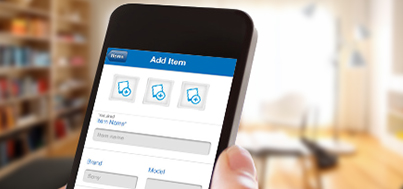You’ve just sat down in your office chair and suddenly can’t remember if you locked the door to your home before you left for work. Or you’re away on vacation when a storm passes through the area where you live, so you want to check to see if your home is OK.
New technology is now available that may help prevent unwanted intrusions or let you keep an eye on what’s going on inside and outside of your home, no matter your location. These systems can be operated from your smartphone or tablet via Wi-Fi or cellular data, CNET says.
“There’s a huge trend toward wireless home safety products,” says Ed Webb, co-founder of Koncerted, a Boston-based technology integration and advisory company.
“These are great devices that used to be out of sight price-wise,” Webb says. “Now they’re much more affordable.”
Webb says he’s seeing a rise in smart home security systems. Here are some of the features and potential benefits of these technologies:
Smart Home Security Systems
A smart home security system helps provide security against break-ins and theft. Many of these systems can now be controlled from a smartphone or tablet, which wasn’t possible in the past. Alarms for the entire house can be set from a smartphone app even when you’re not home, and you’ll get an alert immediately if it’s triggered.
Smart door locks allow you to check whether you’ve left a door open, and you can lock or unlock a door from anywhere using an app on your smartphone. Some smart locks can also be monitored or controlled from a web app on your laptop or desktop computer, notes PCMag.com. You can program in multiple codes so family, contractors or cleaning staff all have their own access codes. You may want to choose a smart lock that keeps an activity log so you can go back and see who entered or exited your home, and when they did so, PCMag.com recommends. Similarly, window and garage sensors can send you an alert on your smartphone when a window or garage is opened.
Surveillance features allow you to watch real-time video of your home’s interior or exterior. Some security cameras will alert you on your smartphone when there’s a potential situation at your home, such as when the sensors detect motion, CNET says. Wi-Fi-connected video doorbells allow you to see who’s at your door and even talk to them. When someone rings your doorbell, these systems send you a notification on your smartphone, USA Today says. Then, using your phone’s Wi-Fi or cellular data, you can see video of the door and talk to the person through your phone.
With smart lighting, you can control your lights from afar through a smartphone app. Using a Wi-Fi or Bluetooth connection, you can use the app to turn your lights on and off from your phone, Forbes says. Maybe you want to turn on the porch lights when the sun goes down to suggest that you’re home, whether you are or not — potentially deterring burglars. Many systems even allow you to program lights to turn on and off on a schedule, helping deter thieves when you’re away, Forbes notes.
Installation and Security Considerations
While most of these systems work wirelessly — which means no holes drilled into your walls to run wires — some devices, such as a security camera or smart doorbells, may need access to a power source even though they communicate with your Wi-Fi wirelessly, Webb says.
Keep in mind that because these smart devices use the Internet, you need to take precautions against hacking, Webb warns. “Homeowners should be cautious that their networks are set up securely,” he says. “Don’t leave a default password in there, and follow the manufacturer’s protocols for cybersecurity.” If you have security concerns, you may want to work with a professional, he adds.
With a smart security system in place, you don’t have to be at home to keep tabs on your property and belongings.
“It gives me peace of mind knowing what’s going on in my house,” Webb says.
This article was originally published on The Allstate Blog.

